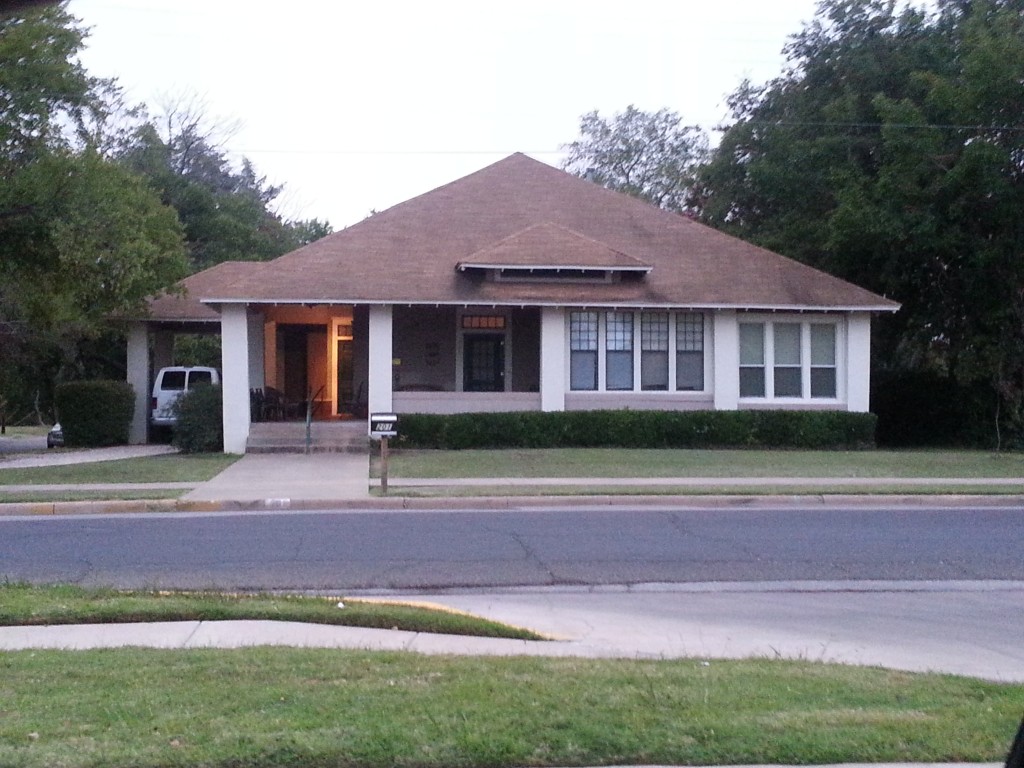I was down in Cleburne, Texas this morning for a hearing on behalf of a client and decided to check out the scene of Cleburne’s most famous (or infamous) location, the property at the heart of the Supreme Court case City of Cleburne v. Cleburne Living Center. To very briefly explain the facts, in 1980 the Cleburne Living Center sought to lease a four bedroom home in Cleburne as a living center for thirteen mentally challenged patients who would live under the care of permanent, on-premises staff.
Cleburne notified Cleburne Living Center (CLC) that the city required a special use permit for any building used for the treatment of individuals with mental disabilities and alcohol or drug addiction. CLC sought approval on their permit application and the city denied the permit on a city council vote. CLC filed suit in federal court on an equal protection argument. Six years later, in 1985, the Supreme Court held in favor of CLC.
Important constitutional law case
City of Cleburne is taught in virtually every constitutional law class in law school for two reasons.
First, it addresses what level of scrutiny applies to the mentally disabled. The Supreme Court held that mentally disabled individuals should not enjoy greater protection than rational basis, the lowest level of protection afforded under equal protection.
Equal protection challenges contend that the government identified a classification of individuals for different treatment. A few classifications receive a higher degree of scrutiny, such as gender, race and national origin.
However, most classifications are subject to rational basis scrutiny; in which the government only must prove the law rationally relates to a legitimate government purpose. If the government entity does not have a good reason for it then the courts will help them come up with one. Almost all classifications under rational basis are held not to violate the equal protection clause of the Constitution.
Second, City of Cleburne is one of the few instances where a law identified a class of individuals for inferior treatment and the Supreme Court held the law was not rationally related to any legitimate government interest.
Background
Cleburne argued two government interests. First, the house sits on a flood plain. As the court pointed out, this is no different than any of the other home on the street or the adjacent neighborhood. Second, the house at 201 Featherton Street is across the street from what was a junior high school and there was a fear that the students would torment the mentally disabled patients. Well, the court also knocked this idea down because the school itself had thirty mentally disabled students and there was no issue with their attendance at the school.
Cleburne conceded that had the residents of the home not suffered mental disabilities, the city would have no problem with the occupancy. This concession limited the Court’s ability to make up other reasons why the law was a good idea. As a result, the Court upheld the CLC’s use of the home absent a permit.
Since I was down in Cleburne, I decided to check out the house and see it for myself Below is a picture of the house, located at 201 Featherton Street.

That’s it. It’s a nice older home. The neighborhood is all older houses. Most are very large homes for their time. It was probably a wealthy neighborhood when built(well, extremely wealthy for a rural train stop like Cleburne) which was likely in the 1910s or 1920s. The parking lot across the street is the junior high school (at the time of the lawsuit). It was originally the high school. (Built in 1918.) Later it became a junior high school when the city built another high school.
This school building is now the state-level district courthouse. (This photographer’s flickr account shows the now-courthouse building. In this picture, you can see the school building on the right and on the left is the house.)
Today
Cleburne’s argument about the proximity of the school to the house is not an unsurprising argument. I’d make the argument, too. It just wasn’t a very good argument. The police department is the next block over. Should some crazy attack on the home occur by Cleburne’s ruthless teenagers, the police could quickly respond.
I am not sure whether CLC (now Cleburne Living Concepts) continues to operate a facility in the home. CLC purchased the home in the 1980s. There is no marking on the house. As I departed from the courthouse after a successful hearing, I saw the van you see parked on the right loading up what appeared to be high school age girls from the house. I suspect this continues to be one of CLC’s facilities. Their website indicates they operate several small facilities around the city. I did not get the impression that the residents of the house were at risk for harassment from the community.

Comments are closed.